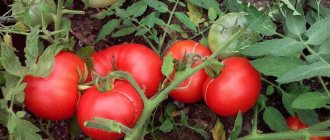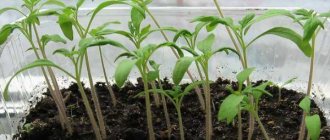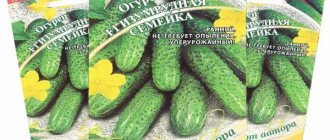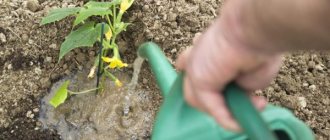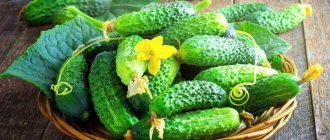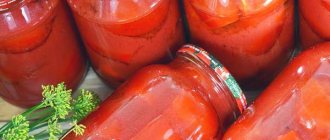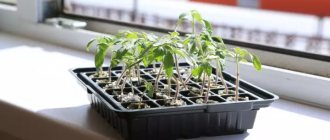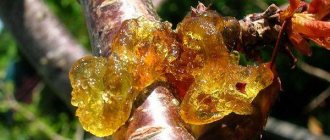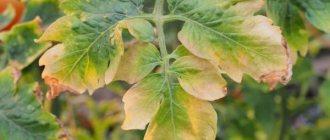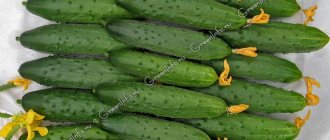Pros and cons of the Frigo technique
Frigo strawberries have a number of advantages and disadvantages.
The undeniable advantages include: Possibility of continuous cultivation of strawberries; Compactness of planting material, which is important during transportation and storage; High level of seedling survival rate; Increased strawberry productivity. The method of growing Frigo strawberries also has disadvantages:
The method of growing Frigo strawberries also has disadvantages:
- High cost;
- The need for special expensive equipment for storing seedlings;
- Difficulties in growing seedlings in regions with short summers.
Waking and planting Frigo seedlings
Frigo strawberries are planted in open ground in May - June. In greenhouse conditions - all year round. For continuous cultivation of berries, planting is carried out at intervals of 50-60 days.
Preparing Frigo seedlings for planting
Frigo strawberry seedlings are sold frozen. Before landing, she needs to be awakened. To begin, defrost the seedlings for 24 hours in a closed package. A sharp change in temperature should not be allowed to avoid causing heat shock to the planting material. To speed up the defrosting process, you can open the packaging container and pour warm water over the seedlings, but only if absolutely necessary.
Frozen strawberry seedlings Frigo
The bushes are removed from the packaging immediately after defrosting, after which their roots are placed in cold water for three hours to replenish the moisture lost during the storage period. It is advisable to add root growth stimulants to the water - Kornevin, Getorauxin, Zircon
It is important not to allow the solution to get on the leaf core, as this will slow down the development of the above-ground part of the strawberry
Landing in the ground
The roots should not be left exposed for more than 15 minutes. After soaking, they are immediately planted in prepared areas.
Soil preparation for spring planting is carried out in the fall. To do this, 10 kg of rotted manure, 60 g of superphosphate and 30 g of potassium salt per square meter are added to the digging. In summer, the soil is dug up at least a month before planting so that it has time to become sufficiently compacted.
It is most successful to plant Frigo strawberries on high ridges under agrotextiles or mulch. You can form ribbon or double-row beds. The distance between bushes should be 25-30 cm.
Planting Frigo strawberries in the ground
Planting is carried out in well-moistened soil. The roots of the seedlings need to be shortened to 10-12 cm. For convenience, you can use a special tool, the length of which is 20 cm, and at the end there is a recess for trimming and deepening the roots.
Before planting, the roots must be straightened; they cannot be buried in a bunch. The roots of the seedlings are lowered vertically into the prepared holes, preventing them from being bent. The soil is pressed well and immediately watered to ensure good contact with the rhizome.
Tool for planting strawberry seedlings Frigo
Frigo strawberry seedlings do not have leaves, so it is very important to ensure that the rosette is above the soil surface. In this case, the root collar should be covered with earth.
Failure to comply with these conditions will lead to the death of the bush.
Caring for Frigo after landing
After planting, the beds need to be watered daily for 10 days. In the future - once a week, using 8-10 liters of water per square meter. During the flowering of Frigo strawberries, the interval between waterings is increased to 10 days. During the fruiting period - after each harvest.
Frigo strawberries always produce a high yield of large berries
During the formation of the ovaries, two fertilizings with ammonium nitrate or urea (20 g per bucket of water) are applied with an interval of 14 days. The working solution should not fall on the leaf rosettes, as this may contribute to the development of rot.
The beds must be kept clean throughout the growing season, periodically loosening the soil and removing weeds. When grown in one growing season, strawberries are removed from the beds and destroyed. A certain number of specimens can be left for raising offspring. This is done after fruiting has ended. If you plan to continue growing it like regular strawberries, you will need to cover the bed with spruce branches.
Planting in open ground
Before planting, it is important to prepare the beds and roots. The beds should be moderately moist and the soil fertilized. We trim the roots, leaving 10-12 cm.
We straighten the roots in the planting hole so that they do not bend upward. Do not cover the heart with soil, but it should not rise above the soil level either. After planting, be sure to water the beds and mulch them. Don’t forget to also weed, loosen the soil, and apply mineral complex fertilizers twice.
And finally, it is worth noting that strawberries are one of the most popular plants to grow. And growing it from seeds is not so difficult if you know all the subtleties and nuances. And we will tell you how to do this in this article.
Author: Natalya Palamarchuk
Features of growing strawberries
The methods of caring for strawberries on vertical and horizontal ridges made of pipes are practically no different from the agricultural techniques of traditional cultivation of the crop. They consist of watering, fertilizing and controlling pests and diseases, and strawberries planted in this way practically do not need weeding.
Variety selection
When choosing strawberries for growing in pipes, you should focus on varieties with long fruiting periods. These can be remontant varieties:
- Albion;
- Queen Elizabeth II;
- Moscow delicacy;
- Evi 2;
- Diamond;
- Temptation.
They are attractive due to the following features:
- early ripening of berries;
- resistance to diseases and pests;
- repeated fruiting at the end of summer;
- harvest of annual plantings.
Hanging varieties of strawberries are perfect for growing in pipes. This is a variety of remontant garden strawberry, characterized by long tendrils. Young rosettes are capable of forming berries even without rooting. In addition to high productivity, these varieties are distinguished by excellent decorative properties. The plantings are a cascade of leaves and shoots, strewn with bright berries and delicate inflorescences.
Rosettes of ampelous strawberries can form berries even without rooting
Planting seedlings
Strawberry seedlings can be planted while the pipes are being filled with soil or at the end, when the structure is fully assembled, secured and watered. For planting, healthy strawberry seedlings are selected, the roots of which are recommended to be dipped in a mash of equal parts clay and manure. This treatment will help the plant retain moisture better. A vertical depression is made in the soil, where the roots are placed, making sure that they do not bend. The root collar of the seedling is placed at ground level.
Strawberry seedlings are planted into planting holes so that the root collar is at ground level.
Seedlings cannot be planted in every planting hole. This arrangement will make it possible to root the emerging young shoots, renew and rejuvenate strawberry plantings.
Watering
The crop needs to be watered frequently, as the soil in the pipes dries out quickly. The need for moisture is determined by the condition of the soil in the planting holes. Watering is carried out through a narrow pipe, which must first be filled to the top with water (if placed vertically), and then gradually release moisture to the plants.
Top dressing
Fertilizing strawberries planted in pipes differs from fertilizing plants grown in the usual way:
- The soil in the pipes is quickly depleted, so the plants need frequent and effective fertilizing. They must be carried out at least once a week.
- On beds made of PVC pipes, liquid fertilizing is preferred, which must be combined with watering. The nutrient solution is poured into the irrigation pipe and through it reaches the roots of the plants. To prepare liquid fertilizer, you can use complex fertilizers or dilute organic matter with water (recommended proportion 1:10).
Pest and disease control
Strawberries planted in PVC pipes may be attacked by the following pests:
- Colorado beetle,
- weevil,
- whitefly,
- strawberry mite,
- slugs,
- snails
Sufficient lighting and moderate watering will prevent the spread of snails, slugs and centipedes. If these pests have spread en masse, then the plantings must be treated with Metaldehyde (according to the instructions). A solution of Karbofos (50 g per bucket of water) will help cope with strawberry mites, weevils and whiteflies. It is best to apply these drugs after harvesting.
Growing strawberries in PVC pipes is not only a simple and economical, but also quite a practical way to get a good harvest. And the garden plot will surprise you with its originality and uniqueness.
Choosing a landing site
Frigo strawberries are planted on a flat, weed-free, well-fertilized area. The ridges are created about twenty centimeters high. Experts believe that the best predecessors are green manure: for example, autumn sowing of mustard, legumes, rapeseed, followed by plowing of green mass in the spring. It will be an excellent soil fertilizer.
You can add manure in the fall. This measure is especially effective on light, depleted soils. Before planting, mineral fertilizer should be applied. Gardeners believe that Azofoska is the most convenient to use. The granules do not need to be embedded deeply into the soil: the fertilizer dissolves well and easily penetrates into the soil with rain (or watering). It can be applied both when cutting furrows and superficially - from 800 g to 1.5 kg. The dosage depends on the soil and whether green fertilizer or organic matter was previously applied.
Planting "frigo" (seedlings) of strawberries in the ground
An important rule: the roots of seedlings should not be left exposed for more than fifteen minutes. After soaking, the “frigo” strawberries are immediately planted on the prepared area.
For spring planting, the soil is prepared in the fall. In summer, the soil is dug up a month before planting so that it is sufficiently compacted. You can form double-line or ribbon or beds. The distance between bushes should be at least 30 cm.
Planting is done in well-moistened soil. It is necessary to shorten the roots of the seedlings to ten centimeters. A special tool has been developed to make installation easier. Its length is 20 cm, and at the end there is a recess for trimming and deepening the plant.
The roots must be well spread out; they should not be buried in a bunch. The roots of the seedlings are lowered vertically into the previously prepared holes; care must be taken to ensure that there are no creases. The soil is pressed tightly and watered immediately to ensure good contact with the rhizome.
Frigo strawberry seedlings do not have leaves, so it is especially important to ensure that the rosette is above the soil surface and the root collar is covered with soil. Failure to follow these rules may lead to the death of the plant.
Preparing seedlings for cultivation
Frigo strawberry seedlings are taken from mother bushes, which must first be planted in the ground. To do this, you should choose the highest-yielding varieties of garden strawberries, such as, for example, Alba.
Work algorithm:
- Rosettes are planted only in sandy soil.
- When flower stalks appear, they are completely cut off. Frigo's method is to force the bush to accumulate nutrients.
- During the growing season, the berry garden must be fed.
- By autumn, plants enter a dormant period. When the leaves turn brown, the bushes are dug up for storage.
- After digging, the roots are carefully shaken off the soil and transferred to a cool room.
- All leaves on the bushes are plucked off, except those that grow in the heart.
- The material is treated with “Hom” or “Fundazol” to prevent the development of rot.
- Next, the seedlings are sorted into classes and stored.
The sockets prepared in this way, 50 to 100 pieces each, are placed in plastic bags with a thickness of at least 0.45 mm. You cannot use a film of greater thickness, otherwise the strawberries may die.
The optimal temperature for proper storage of seedlings is +1.5 degrees. A deviation of 0.5 degrees in one direction or another is possible, but no more. The fact is that in the warmth, seedlings can wake up, and when the temperature drops, they can simply freeze.
The shelf life of strawberries is up to 9 months. You can store seedlings in the refrigerator.
Watch this video on YouTube
What is strawberry frigo
So, frigo is not a variety, but a technology for preparing strawberry planting material (garden strawberries). It consists in the following.
Strawberry mother bushes of the highest-yielding varieties are planted in spring in light soil (sandy or sandy loam), fertilized and not allowed to bloom, so that the plant directs all its energy to reproduction. Newly hatched young bushes are also regularly fed and waited for them to mature. It occurs in November, when the strawberry foliage acquires a brown tint, and the rhizome becomes uniformly brown, remaining white only at the tips.
Mature plants are dug up, transferred to a cool room, shaken off the ground, but not washed or cut. Then all large leaves are removed, and only young leaves remain on the bush. Afterwards, the plants are treated with fungicides (Topaz, Hom, etc.), sorted depending on size, tied into bundles of 50-100 pieces and sent for storage.
Frigo strawberry seedlings are stored in special conditions - folded in thin plastic bags and left in refrigerators. The chamber must maintain a stable temperature from 0 to –2°C and a humidity of no more than 90%.
If all standards are observed, bushes can be stored frozen for from 2 weeks to a year without loss of yield and up to 3 years with a decrease in yield.
Rules of care and methods of propagation of Frigo strawberries
Caring for Frigo strawberries is quite simple.
Twice during the growing season, nitrogen fertilizers are applied in liquid form, diluting 15 g of urea in 10 liters of water. Fertilizers are poured at the root, trying to prevent moisture from getting on the leaves, as this can cause the development of fungal diseases.
Water the strawberries immediately after picking the berries, even if it rained.
The plantation should be kept moist. It is very important to control weeds regularly. Weeds not only remove nutrients from the soil, but also promote the appearance of insect pests and diseases, which significantly reduces crop yields. If you mulch the plantation, it will greatly facilitate maintenance
Straw or agrofibre will do.
Strawberries can be propagated using the Dutch Frigo technology in the traditional way - with mustaches. To do this, leave up to 5 whiskers on the strongest rosettes, and cut out the rest. On the selected mustaches, only young bushes of the first row are left. In the fall, such young rosettes can be stored for storage, and in the spring they can be planted.
Planting "frigo" (seedlings) of strawberries in the ground
Before planting in open ground, the soil is prepared in the fall. The area should be dug up and organic matter added. You can also plant green manure and plow in the green mass in the spring. This method is relevant for poor soils.
Planting time is regulated by the climatic conditions of the region, mainly May-June. The second planting should be done after 60 days, then the harvest will be continuous.
Strawberry seedling material
Work algorithm:
- The seedlings are taken out of the refrigerator and awakened. To do this, containers with planting material are opened and watered with warm water.
Seedlings should not be exposed to sudden temperature changes.
- Once the strawberries are defrosted, they are placed in cold water for several hours to replenish moisture.
- First add any stimulant to the water, for example, Zircon.
- Before planting, the root system is cut off by 10 cm. To speed up the process, a device is used that helps to deepen the root into the soil and at the same time trim it.
- The seedlings must be planted within 15 minutes after they are pulled out of the water.
- With thickened plantings, the step between bushes is 15-20 cm, with ordinary plantings - 30 cm.
- Straighten the roots and place the rosette above ground level.
- Water and mulch the soil; you can use black agrofibre with holes for the root system.
Continue daily irrigation for 10 days. Then, once every 5 days in the absence of rain is enough.
An important rule: the roots of seedlings should not be left exposed for more than fifteen minutes. After soaking, the “frigo” strawberries are immediately planted on the prepared area.
For spring planting, the soil is prepared in the fall.
Planting is done in well-moistened soil. It is necessary to shorten the roots of the seedlings to ten centimeters. A special tool has been developed to make installation easier. Its length is 20 cm, and at the end there is a recess for trimming and deepening the plant.
The roots must be well spread out; they should not be buried in a bunch. The roots of the seedlings are lowered vertically into the previously prepared holes; care must be taken to ensure that there are no creases. The soil is pressed tightly and watered immediately to ensure good contact with the rhizome.
Frigo strawberry seedlings do not have leaves, so it is especially important to ensure that the rosette is above the soil surface and the root collar is covered with soil. Failure to follow these rules may lead to the death of the plant.
Preparing seedlings
It is important to remember that only packaged seedlings can be stored for many months. As soon as the package is unpacked, the bushes must be planted within the first 24 hours. But first you need to carry out preparatory measures:
- After removing the film, leave the planting material to lie for several hours at normal room temperature, covering it with wrapping film so that the roots do not dry out. The material should recover from freezing, but not abruptly. After an hour or two, you can place the bushes (roots) in a container with cold water and keep them there for 2-3 hours. This will help them replenish their lack of moisture.
- To speed up the awakening process, the roots can be placed in another container with warm water and the addition of a stimulant.
- After the seedlings are taken out of the water, they should be planted in the ground within 15 minutes.
- But before planting, trim the roots to a length of about 10 cm.
Strawberry seedlings "Frigo" - what is it?
Tips for choosing soil for strawberries
This planting method requires soil with special nutritional value. Soil preparation must begin in the fall. The calculation of soil composition is taken at the rate of 1 m2. You will need to add 11 kg of rotted manure and 30 grams of potassium salt. You will also need superphosphate in the amount of 65 g. It is better to plant the berries in fairly high ridges in 2 rows. Then mulch with straw.
Having understood the Frigo strawberry and what it is, you can consider the advantages and disadvantages of the variety. There is a high yield and the possibility of obtaining it out of season. Gardeners also note the quality and safety of planting material with this method. The disadvantage of this variety is that the seedlings are more expensive than the ordinary type of strawberries. The fruit rate of strawberries is high only in the first year, and then it does not differ from other varieties with an increased cost of the main seedlings.
This material will help you learn how to properly plant strawberries using Frigo technology.
How to grow frigo strawberries
Planting can be done both on ridges (if the planting season has already begun) and in flowerpots (if spring is still far away). You can also temporarily plant the bushes in small pots (up to 500 ml in volume), and when the weather warms up, plant them in a permanent place.
Scheme of proper planting of Frigo strawberries in the ground
Before planting, the roots are cut to 10-12 cm, straightened and lowered into the soil so that they are distributed, lie flat, without creases, and not in a ball, but freely. The soil needs to be well moistened and immediately compacted around the bush after planting. The seedlings do not have leaves, so you need to carefully monitor at what level the root rosette is located. Covering it with soil can lead to the roots getting wet when watering, and free exposure to air can lead to drying out.
The soil for frigo strawberries should be very nutritious, and it is usually prepared in the fall. Per 1 sq.m of land, add 10 kg of rotted manure, 30 g of potassium salt and 60 g of superphosphate. It is best to plant strawberries in high ridges in 1-2 rows and mulch with agrotextiles or straw.
Strawberry and frigo strawberry seedlings - what are their advantages?
You can extend the fruiting period of berry crops in the garden using the technology of breeding remontant varieties. This also applies to strawberries, strawberries and even raspberries. But to obtain a full harvest throughout the summer, it is necessary to comply with certain rules of agricultural technology, which include regular watering and the application of mineral fertilizers according to a special schedule. This is very difficult to do, so most often the second harvest of the season is not pleasing with its abundance.
Frigo strawberry seedlings are a different matter, so it’s worth understanding in detail what its practical advantages are. Currently, the technique is successfully used in the Netherlands and some other agricultural powers. It allows you to plan the time of harvest in advance, stretching it even throughout the year, provided it is possible to ensure appropriate temperature and light indicators of the environment.
The thing is that seedlings of “Frigo” strawberries allow you to slow down the biochemical processes in the root system and flower buds, which do not begin to grow until they awaken, even in the summer months. Thus, you can plant frigo seedlings in August and get a guaranteed harvest in mid-October, at the height of Indian summer. Naturally, at this time the price of fresh berries is much higher than during the mass fruiting season. Therefore, the gardener has the opportunity to sell the fruits of his labor at a profit.
The main advantage is the ability to plan the harvest date. An important advantage is that there is no danger of freezing in winter. And due to the well-developed root system, the yield exceeds standard indicators by 2-3 times.
What are frigo seedlings, pros and cons compared to regular seedlings
When talking about the use of frigo strawberry seedlings, we must understand that we are mainly talking about industrial plantations. The essence of the technology is that in late autumn, seedlings are dug out of the bed, cleared of soil and excess vegetation (for example, damaged leaves and most of the normal ones) and packaged. The seedlings sent for storage consist of a root lobe, a growth bud and several small young leaves around it. Prepared seedlings are stored in special chambers where air humidity is maintained at about 90% and temperature 0...-2 o C. The shelf life can be almost up to a year. Properly planted after such storage, seedlings can begin to bear fruit within two months after planting.
The most important thing is strict compliance with storage conditions
In particular, seedlings of well-known Dutch varieties are produced in this way on an industrial scale. When growing it, technologies are used that exclude the introduction of pathogens and pests. The soil is prepared and processed in a special way, all rules of agricultural technology are strictly followed. When the grown bushes enter a dormant state in November or December, they are dug up using special equipment, and the queen cells from which the seedlings were obtained are destroyed. They are engaged in the production of such seedlings, in particular, in the Netherlands, Poland, and Italy.
The advantages of the technology are:
- the possibility of organizing a continuous fruiting cycle;
- use of nutrients almost entirely for their intended purpose;
- compactness of seedlings, allowing them to be easily transported;
- rapid survival rate compared to ordinary seedlings, associated with a well-developed root system and the almost complete absence of above-ground parts;
- “sterility” of seedlings from the point of view of pathogens.
Disadvantages should be recognized:
- the need for special equipment, including refrigeration;
- the requirement for strict adherence to temperature and humidity during storage (when the temperature moves to positive values, growth begins, when it drops to -3 o C, the seedlings die);
- the difficulty of using technology in regions with short summers, even in the middle zone of our country: in this case, even the cultivation of rosettes must be carried out in greenhouses.
Video: how frigo seedlings are stored and prepared for sale
How to check the quality of frigo seedlings
The slightest failure to comply with storage conditions sharply worsens the quality of seedlings; often even repeated freezing after accidental or deliberate defrosting destroys them. However, upon visual inspection it is difficult to assess the degree of viability of seedlings, since even dead specimens look alive when frozen. There is a simple and reliable way to assess the viability of seedlings when purchasing. It is necessary to tear off one of the roots and gently squeeze it with your fingers. If at the same time the liquid contents of the root are released from the breakage site, there is a high probability that the seedlings have already died.
The roots may appear to be alive, but be sure to check for this.
In general, Russian experts warn against purchasing frigo seedlings in our country, saying that recently their quality has dropped significantly. In addition to the opportunity to purchase already dead material, there are often cases of selling seedlings infected with various diseases. In this regard, it is difficult to unequivocally recommend this type of seedlings to ordinary summer residents; it is better to leave this area of activity to large agricultural firms and specialists with appropriate education.
Description of technology
The method is used with various abundantly fruiting varieties of berries. Yielding bushes are grown in several stages:
- To obtain seedlings at the beginning of the season, mother bushes are planted in sandy soil. Peduncles are cut off in the first year. The main resources of the plant are directed to reproduction.
- Annual seedlings are grown during the season.
- In late autumn, the bushes enter a state of growth arrest and bud formation, the so-called “resting phase.” This can be understood by the appearance of the plants: the root becomes brown, only the tips remain light, the leaves darken and turn brown. At this point, the seedlings are dug up, cleaned, sorted into classes and sent for storage until the next planting.
- Ready seedlings are planted in open ground at the beginning of the season, usually in May. Year-round planting is possible in greenhouses. If you need continuous harvesting throughout the year, the planting difference is approximately 2-3 weeks.
- Plants that have retained all the nutrients and have not wasted them over the winter fighting unfavorable conditions quickly begin to bear fruit. The berries ripen within 1.5 months after planting.
Harvesting seedlings
To obtain seedlings using the Frigo technology, mother plants of the most productive varieties, such as Honey, Elsanta, Alba and the like, are first planted.
- Mother bushes are planted in sandy soil - it is most suitable for plant development.
- When flower stalks appear, they must be removed so that all the nutrients can be used for the production of “offspring.”
- During the growing season, plants are fed monthly with 1 tsp of nitroammophoska. per 1 m².
After digging, the bushes need to be freed from the ground and sent to a cool room. There, the plants should be freed from leaves, but not all of them; those leaf blades that are located at the growth point must be left.
During the same period, the seedlings need to be treated with chemicals, usually treated in turn first with the drug Hom, then with Fundazol, in order to prevent the appearance of diseases and plant rotting.
Preparing to plant frigo strawberries
So, you have ready-made seedlings of frigo strawberries - when purchasing them, do not forget to pay attention to the diameter of the root collar of the bush (8-12 mm - berries will appear only in the second year, 12-20 mm - berries will appear this year), and full development of its root system in order to avoid “fakes”. Seedlings must be transported to the growing site and prepared for planting, avoiding temperature stress for the frozen plant
For this:
- after defrosting for a day, let the seedlings “rest” in a shaded place - rest in plastic packaging to avoid drying out the roots or heat shock;
- on the second day, open the bags and place the removed seedlings for 3-4 hours in water, the temperature of which should not exceed the ambient temperature - this way the seedlings will get the missing moisture lost during the storage period;
- If desired, add root formation stimulants (Kornevin, Etamon, Zircon, etc.) to the soaking water, making sure that the drug does not get on the apical buds of the seedlings.
Preparing seedlings for planting
These strawberries are planted in open ground in May-June. In a greenhouse - all year round. In order for the process of growing berries to be continuous, this must be done at intervals of fifty to sixty days. Frigo strawberries are sold frozen, so they should be “awakened” before planting.
First, the seedlings must be defrosted in a closed package for 24 hours, but too sharp a temperature change should not be allowed, so as not to cause heat shock to the planting material. To speed up defrosting, open the packaging and pour warm water over the seedlings. Remove the defrosted bushes from the packaging and place their roots in cold water for three hours. This will help replenish the moisture lost during the storage period. It is advisable to add a root system growth stimulator to the water - “Getorauxin”, “Zircon”, “Kornevin”.
Try not to let the solution get on the leaves, as this can lead to slow development of the above-ground part of the bush.
Classification into Frigo strawberry groups
Frigo strawberries are divided into 4 main groups. These groups are distinguished based on the diameter of the neck and the number of peduncles.
Strawberry Frigo A+ extra
This group includes seedlings of the most expensive strawberry cultivars; their yield can reach 20 tons per hectare.
- The diameter of the neck of seedlings of this class usually varies from 2 to 2.5 cm.
- Up to 5 peduncles are formed on each bush.
- Up to 0.5 kg of berries can be collected from each bush.
Berries are often formed on the main shoots, but they can also form on lateral shoots and certainly in the first year of growing garden strawberries.
Strawberry Frigo A+
A very popular group, the berries of varieties of this group are stored for a very long time.
- The productivity of such plants is half as high.
- The diameter of the cervix usually ranges from 1.5 to 1.8 cm.
- Up to 3 peduncles are formed on each plant.
The plants are characterized by abundant flowering and fruiting; the berries can be stored for a long period.
Strawberry Frigo A
Typically, seedlings of this category are purchased by owners of private plots.
- Each bush forms 2 peduncles.
- The yield reaches 250 g per bush.
- The diameter of the neck is from 1.2 to 1.5 cm.
The first harvest is obtained already in the first year after planting
Strawberry Frigo B
Gardeners are not very fond of this group; reviews of such seedlings are often not flattering.
- Plants of this group have one peduncle and begin to bear fruit in the second year after planting.
- For good development of the plant in the first year, all flower stalks that appear must be removed by plucking or cutting.
- The diameter of the neck rarely exceeds 1 cm, usually it is 0.8-0.9 cm.
If these seedlings are purchased, it is only for home use.
What do we call the frigo method?
Frigo is not a variety, as many inexperienced gardeners think, but a method that will help to obtain strong strawberry seedlings and preserve them.
It is based on the following stages:
- For frigo seedlings, only healthy annual mother bushes are chosen.
- They are grown in disinfected soils until they go dormant (around November).
- The seedlings are dug up, treated against diseases and pests, and tendrils, leaves and soil residues are removed. Next they sort.
- The prepared bushes are tied into bunches, wrapped in a special film and sent to a special storage facility, where it is possible to control temperature and humidity. Seedlings should be stored at a fairly low temperature (down to -1C) and a humidity of about 80%.
Bushes are sorted not only by size. There are 4 classes. The basis for the classification was the thickness of the crown (the part between the roots and the leaf rosette).
| Class name | Neck size | Peculiarities |
| IN | 8 - 12 mm | Will bear fruit next year |
| A | 12 - 15 mm | Seedlings form 1-2 buds, in the first year it will be possible to collect up to 20 fruits |
| A+ | 15 - 18 mm | In the 1st year, no more than 3 generative buds are formed. You can collect up to 30 berries. The total yield is up to 10 t/ha. |
| W.B. | Diameter greater than 22 cm | In the first year there will be up to 5 flower stalks, you will collect no more than 450 g from the bush. |
Preparing for winter
Covering plants with lutrasil or perforated film with the onset of cold weather in autumn allows you to prolong the formation of flower buds, and also contributes to less damage to plants in winter in case of severe frosts. The shelter is left until flowering, which allows not only to increase productivity, but also to somewhat speed up fruiting.
The opposite effect can be obtained by covering the plants in late autumn, before the onset of frost, with straw. If it is not removed for some time in the spring, the soil under it warms up more slowly, and as a result, you can get “delayed” fruiting (for 5–7 or even more days).
frigo-optom.ru
Planting seedlings
When planting, try to make rows extending from south to west; the surface should ideally be straight. Try to use raised beds. Plant in the evening or in cloudy weather and be sure to water the soil after planting.
The soil for planting Frigo seedlings must be prepared in the fall.
The site is dug up, all weeds are removed and at the same time 5 kg of humus is added per 1 m² of soil. On poor soils, it is better to sow green manure crops in the fall and dig them up in the spring, incorporating organic matter into the soil.
Planting is carried out depending on the climatic conditions of the region. Usually it's May
or
June
. Replanting can be done after two months, extending the harvest period.
Stages of work when planting Frigo seedlings
- The seedlings are taken out of the refrigerator, removed from the film and watered with water at room temperature - no higher!
- Zircon
,
Cytovit
or another similar growth stimulant in it From the moment of removal from the water to planting in the soil, ideally no more than a quarter of an hour should pass. - When planting, leave 15 to 30 cm of free space, depending on the quality of the seedlings - the higher the quality, the more free space there should be.
- Immediately before planting, the root system must be shortened by 10 cm. When planting, be sure to straighten the roots and place the rosette 0.5 cm above the soil level.
- After planting, the plants need to be watered (2 liters for each) and the soil mulched (you can use black agrofibre).
Over the next 10 days, it is necessary to water the plants every day, using 1 liter of water for each.
Then watering can be done once every 5 days.
Collection is carried out in the usual way, but care after collection is somewhat different.
- Upon completion of fruiting, the mulch layer is removed.
- Plants are fed with nitroammophoska at 80 g per 10 m² of area. If fertilizing is done in the autumn, then you need to use potassium sulfate 200 g per hundred square meters of land.
Apply fertilizers strictly after watering the soil.
Advantages and disadvantages of frigo seedlings
Advantages of frigo seedlings:
- Frigo seedlings are ahead of regular ones in all respects. Plants grown from it have more flower shoots and leaves. They are taller and their leaves are wider.
- By planting seedlings at different times, you can get a strawberry harvest all summer long. In this, frigo strawberries differ from remontant strawberries, which produce a second harvest a certain time after the first. And in the interval between them there are no berries.
- A strong root system and the absence of leaves allows the plant to quickly take root. High temperature during rooting of frigo seedlings does not have a detrimental effect on plants.
- The seedlings do not freeze in the garden bed in winter.
- The absence of leaves allows for compact placement of seedlings. As a result, it takes up little space both in the freezer and when transporting planting material.
Disadvantages of frigo seedlings:
- The labor-intensive process of harvesting seedlings makes it expensive.
- To store plants, you need to create special conditions. The optimal temperature for frigo seedlings is -1.5° C. And the permissible temperature range is from 0 to -2 degrees. When the temperature drops to -3°C, the plants will die. At above-zero temperatures, after a while they will also begin to germinate and become unusable.
- The humidity in the storage chamber should be 90%.
- Hermetic storage packaging must have a certain thickness. Optimal 0.055 mm. If it is thicker, carbon dioxide will not be able to pass through the bag and the plants will not breathe.
- In mid-latitudes, growing frigo seedlings is complicated by the fact that during the short summer the plants do not have time to grow to the desired state. As a result, you have to dig out rosettes late in the fall when the weather is bad.
Despite these disadvantages, growing frigo seedlings is profitable.
Strawberry frigo, description of the method
So, frigo strawberries are not a new fashionable variety or an unusual variety of berry crop, it is a special agrotechnical method of growing strawberries. What is the essence of this method? How to grow frigo strawberries correctly?
Let's look at everything in order:
- This technology for continuously growing strawberries was first tested in Holland. The positive experience of obtaining sweet berries throughout the year quickly spread throughout the world. And countries such as the Netherlands and Great Britain have almost completely switched to planting strawberries using frigo seedlings.
- Frigo strawberry technology is to artificially create certain dormant conditions for strawberry seedlings. The result is a large supply of planting material that can be used at any time of the year.
- The word "frigo" literally translates as "cold". The essence of the method is that instead of the usual wintering of strawberry seedlings in open ground, the plants are dug up and “frozen” until the next time they are planted. Such bushes are stored in sealed plastic bags in the basement or refrigerator, maintaining zero or slightly negative temperatures.
- Thanks to this technique, frigo strawberry seedlings can be planted throughout the year: in warm times - in open ground, in cold periods - in a greenhouse. This means that the harvest of tasty and healthy berries can also be obtained all year round, and even within the planned time frame.
- Conventionally, the technology for growing frigo strawberries can be represented by the following scheme: planting mother bushes of varietal strawberries to produce (with tendrils) young strawberry seedlings; digging up the resulting seedlings for the winter and storing them “frozen”; preparation and planting of “thawed” seedlings in the ground according to the planned dates; after 8-9 weeks - harvesting.
In order to properly prepare seedlings and grow frigo strawberries, you need to know and follow the technology of the process: from harvesting and storing seedlings to planting and caring for seedlings.
Below is a step-by-step process for cultivating strawberries using the frigo method.
Where to buy frigo strawberries?
As a rule, frigo strawberry seedlings are sold frozen, upon receipt of which it is important to “defrost” them correctly (without sudden temperature changes), and then immediately plant them in the ground. When purchasing strawberry seedlings, you should first of all pay attention to the appearance of the plant: frigo seedlings are famous for their full-fledged and well-developed roots, and the almost complete absence of a leaf rosette. If seedlings are sent to the buyer by mail, the seedlings are treated with a special preparation that allows increasing the shelf life of seedlings in hermetically sealed containers. Do not be alarmed if the resulting planting material is covered with sphagnum moss - this is done specifically to prevent the development of rot during long-term transportation.
Frigo technology - features of growing strawberry seedlings
Despite the large amount of information about the popular Frigo strawberry seedlings in Europe, the essence of the method and its effectiveness remain unclear to many summer residents. Not everyone understands what it is, confusing the technology with the name of the strawberry variety, and being skeptical about the announced results and yield indicators.
Meanwhile, the technology for growing frigo has been positively assessed and adopted by large farms in Europe and in a number of regions of Russia. Gradually, domestic summer residents who grow berries for sale are beginning to use it.
Strawberry frigo, description of the method
So, frigo strawberries are not a new fashionable variety or an unusual variety of berry crop, it is a special agrotechnical method of growing strawberries. What is the essence of this method? How to grow frigo strawberries correctly?
Let's look at everything in order:
- This technology for continuously growing strawberries was first tested in Holland. The positive experience of obtaining sweet berries throughout the year quickly spread throughout the world. And countries such as the Netherlands and Great Britain have almost completely switched to planting strawberries using frigo seedlings.
- Frigo strawberry technology is to artificially create certain dormant conditions for strawberry seedlings. The result is a large supply of planting material that can be used at any time of the year.
- The word "frigo" literally translates as "cold". The essence of the method is that instead of the usual wintering of strawberry seedlings in open ground, the plants are dug up and “frozen” until the next time they are planted. Such bushes are stored in sealed plastic bags in the basement or refrigerator, maintaining zero or slightly negative temperatures.
- Thanks to this technique, frigo strawberry seedlings can be planted throughout the year: in warm times - in open ground, in cold periods - in a greenhouse. This means that the harvest of tasty and healthy berries can also be obtained all year round, and even within the planned time frame.
- Conventionally, the technology for growing frigo strawberries can be represented by the following scheme: planting mother bushes of varietal strawberries to produce (with tendrils) young strawberry seedlings; digging up the resulting seedlings for the winter and storing them “frozen”; preparation and planting of “thawed” seedlings in the ground according to the planned dates; after 8-9 weeks - harvesting.
In order to properly prepare seedlings and grow frigo strawberries, you need to know and follow the technology of the process: from harvesting and storing seedlings to planting and caring for seedlings.
Below is a step-by-step process for cultivating strawberries using the frigo method.
Where to buy frigo strawberries?
As a rule, frigo strawberry seedlings are sold frozen, upon receipt of which it is important to “defrost” them correctly (without sudden temperature changes), and then immediately plant them in the ground. When purchasing strawberry seedlings, you should first of all pay attention to the appearance of the plant: frigo seedlings are famous for their full-fledged and well-developed roots, and the almost complete absence of a leaf rosette. If seedlings are sent to the buyer by mail, the seedlings are treated with a special preparation that allows increasing the shelf life of seedlings in hermetically sealed containers. Do not be alarmed if the resulting planting material is covered with sphagnum moss - this is done specifically to prevent the development of rot during long-term transportation.
